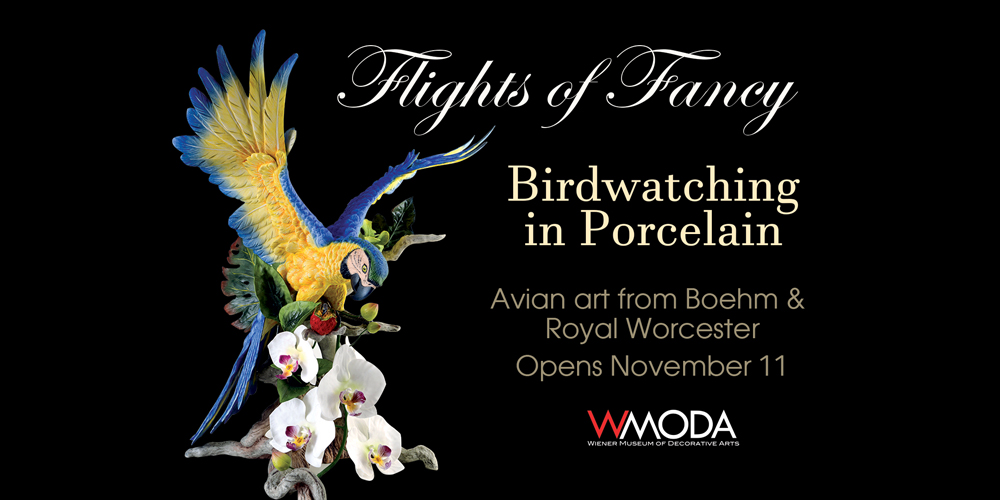Birdwatchers are in for a treat at the new Flights of Fancy· Birdwatching in Porcelain exhibition which opens on November 11. Beautiful studies of American birds in their natural habitats were portrayed in fine china by Dorothy Doughty at the Royal Worcester factory in England. From the 1930s onwards, her work dominated the American collectibles market until Edward Marshall Boehm became this country’s leading exponent of avian porcelain art during the 1950s. His wife, Helen continued to promote Edward’s work long after his early death in 1970. Boehm porcelain birds were presented to international leaders and foreign dignitaries, including Queen Elizabeth II and Mao Tse-Tung. Boehm became an invaluable American icon for princes and presidents from Eisenhower onwards. Helen once said, “Edward made the birds but I made them fly.”
Royal Worcester Birds
Dorothy Doughty studied at Eastbourne College of Art and became a keen naturalist and ornithologist. Her younger sister Freda was also an artist and teacher, specializing in figurines of children. They both began working for Royal Worcester in the early 1930s based at their home studio in Kent. Initially Dorothy modeled the British birds that visited their garden, and she acquired more exotic species to study in cages. In 1933, she was commissioned to produce a spectacular series of American birds in their habitats.
Miss Doughty had never worked in bone china clay before but she was determined to make the birds as life-like as possible in naturalistic settings. She visited the Worcester factory many times and persuaded the management to build a new workshop to make her intricate bird sculptures. The Maltese flower modeler, Antonio Vassalo, trained new apprentices in his specialist technique for hand-molding the branches, trees and flowers. Harry Davies, one of Worcester’s finest artists, was responsible for reproducing the subtle colors of the birds’ plumage and surrounding blossoms.
Several American bird subjects were introduced before the outbreak of World War II in limited editions of 500 and quickly sold out to collectors. After the war, Dorothy made trips to America to study birds in their native environments. Armed with her copious sketches, her models became more adventurous creating many production challenges for the Worcester factory. Because of Dorothy’s deteriorating health, Ronald Van Ruyckevelt was engaged to assist her. She died at the age of 70 in 1962. In total, 36 pairs of Doughty American birds were produced during her lifetime, some being made six years after her death.
In Dorothy’s words: “My work with the birds has been a joyful thing. In this tortured world, one of the happiest ways of spending a life is to work closely with nature. Although the miraculous perfection of birds and flowers, and indeed all wild things, is beyond the power of man to portray in any medium, he or she who strives towards it, learns to see even more deeply, to glimpse something of the infinite and to feel a privileged and very humble person.”
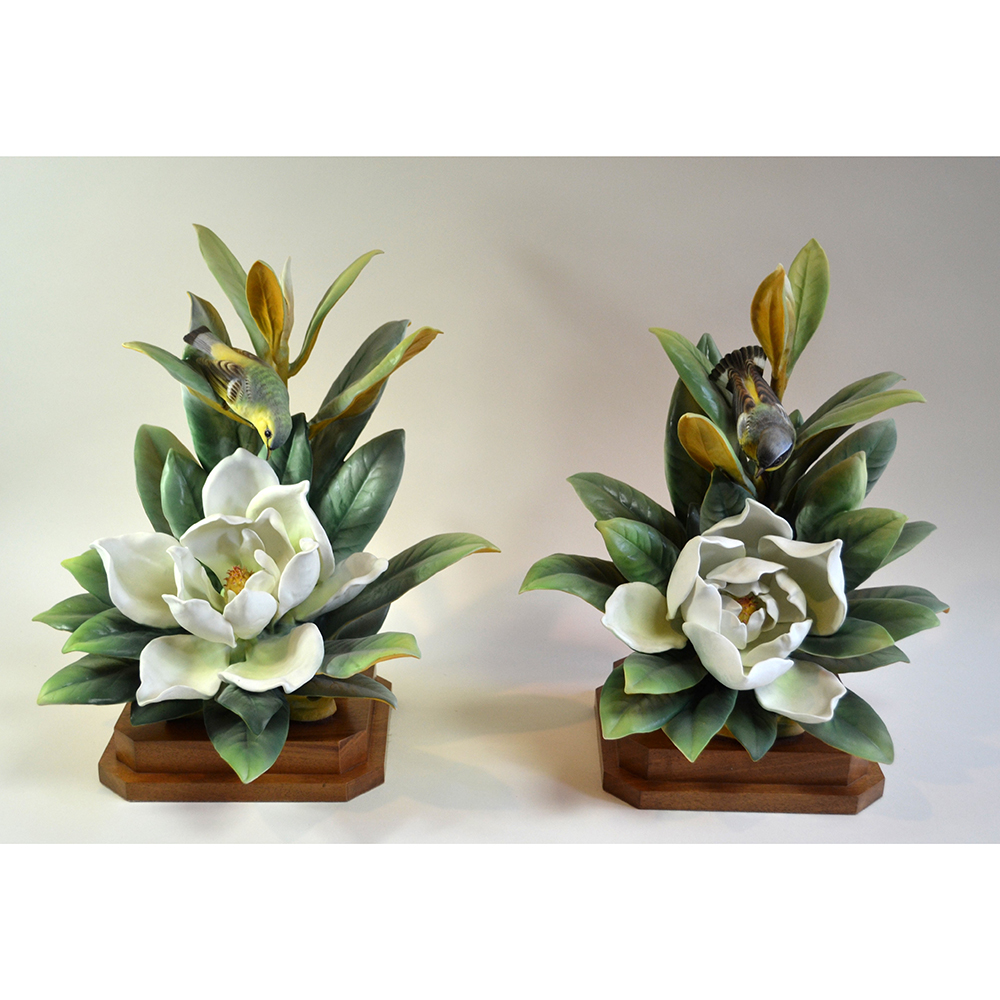
Royal Worcester Magnolia Warbler
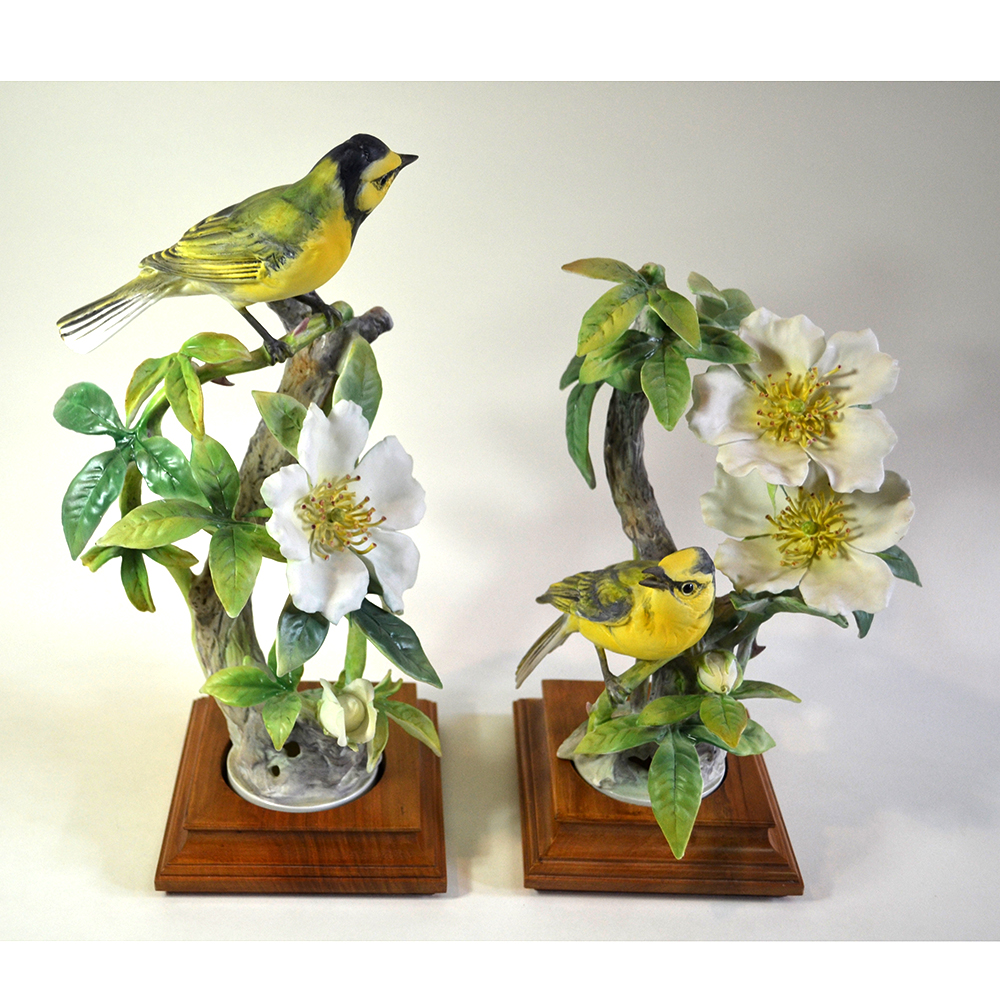
Royal Worcester Hooded Warbler
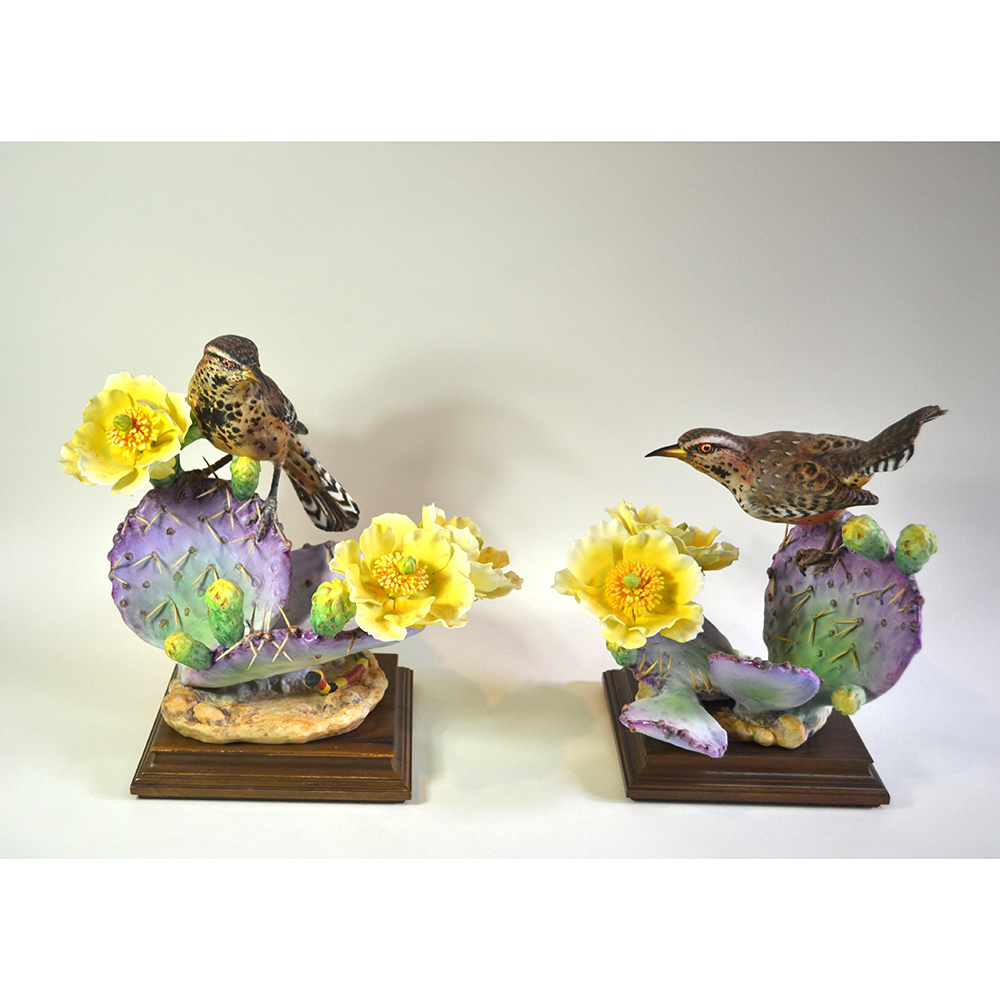
Royal Worcester Cactus Wren
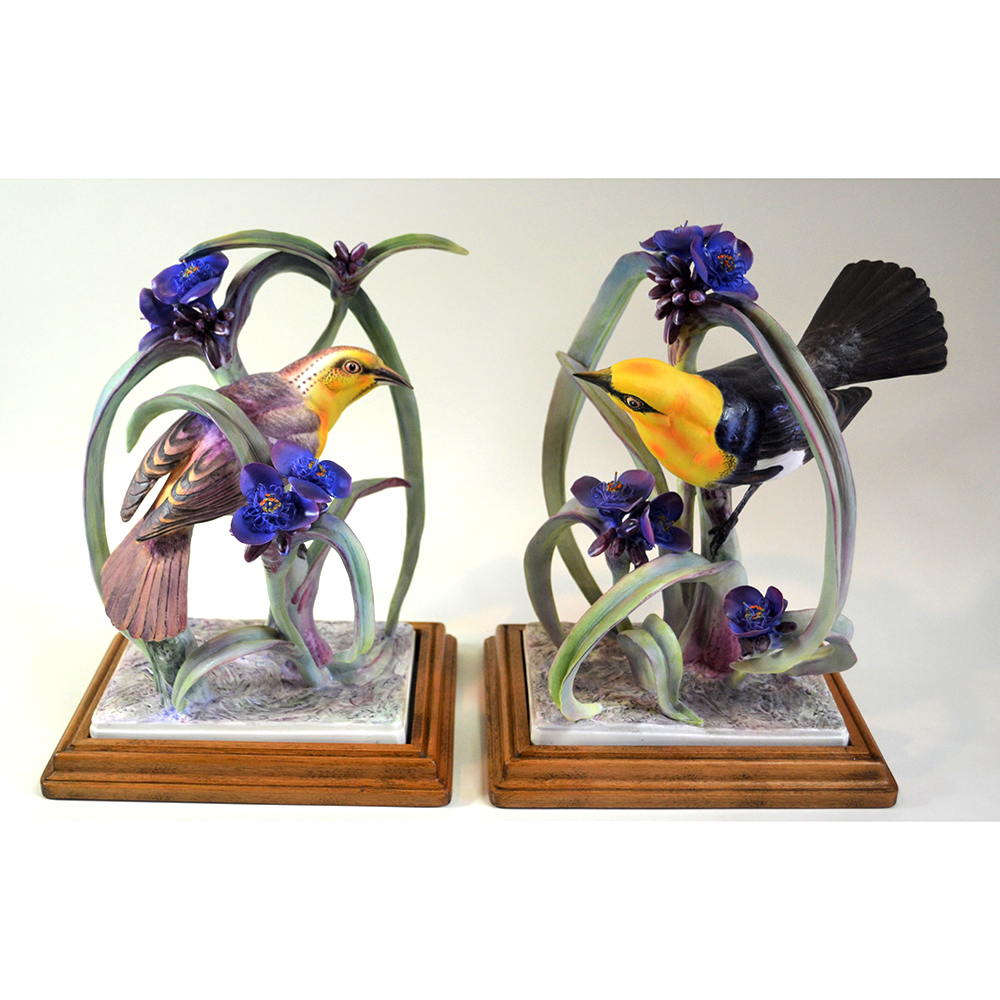
Royal Worcester Yellow Headed Blackbird
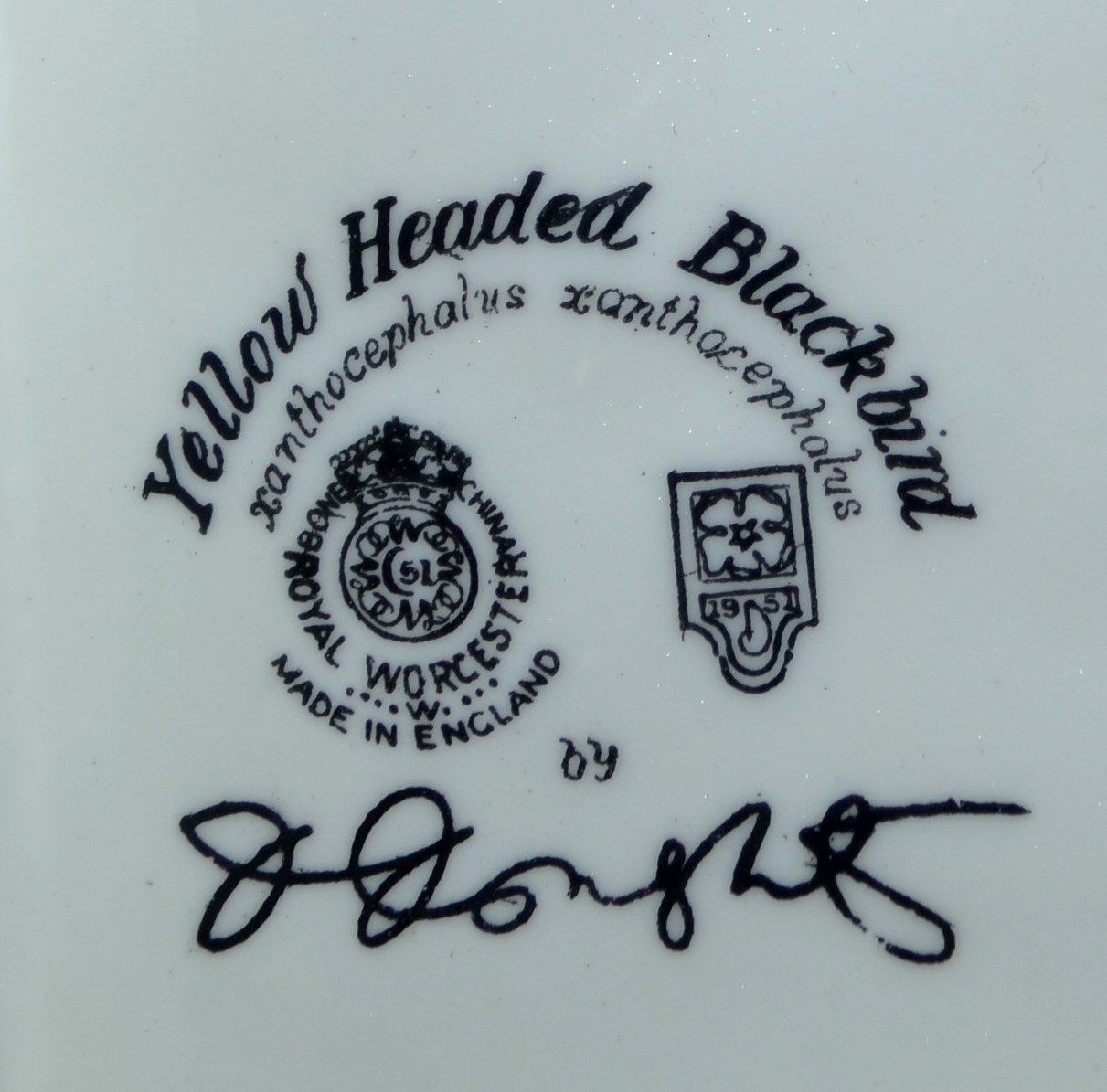
Royal Worcester backstamp
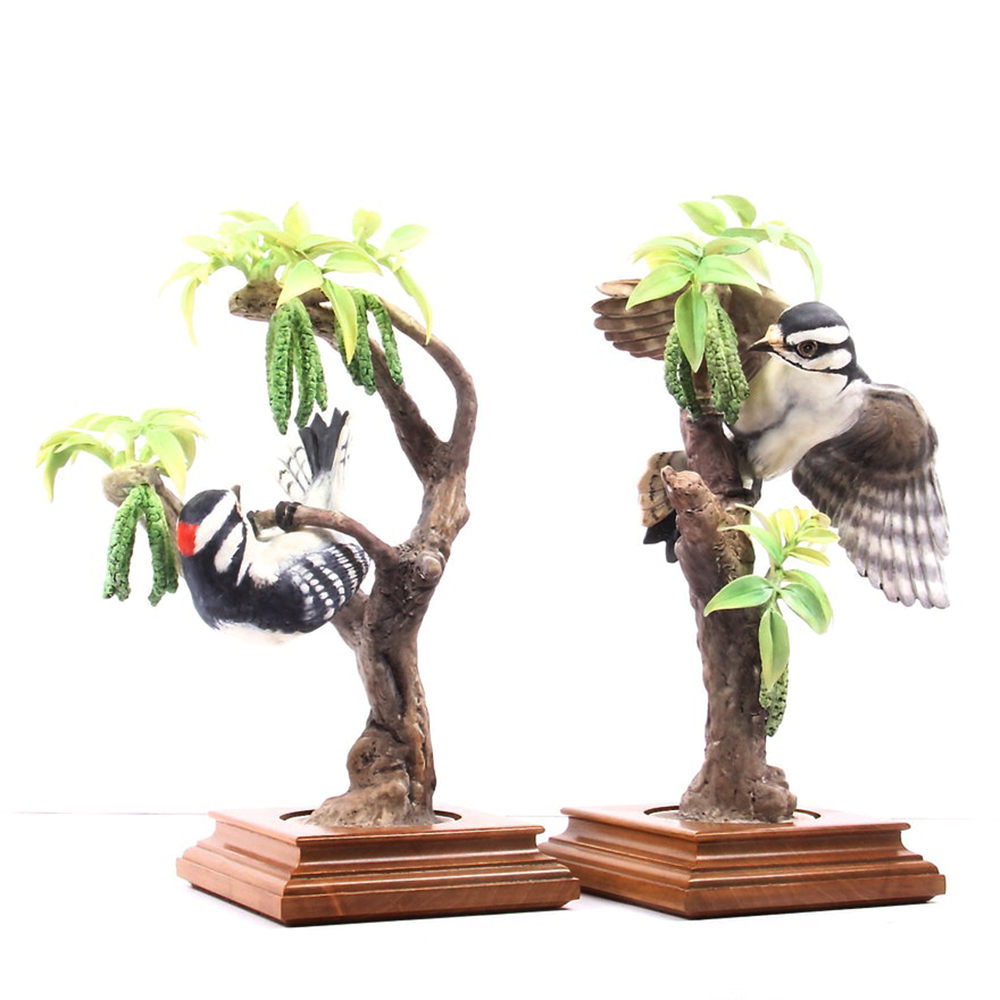
Royal Worcester Little Downy Woodpecker
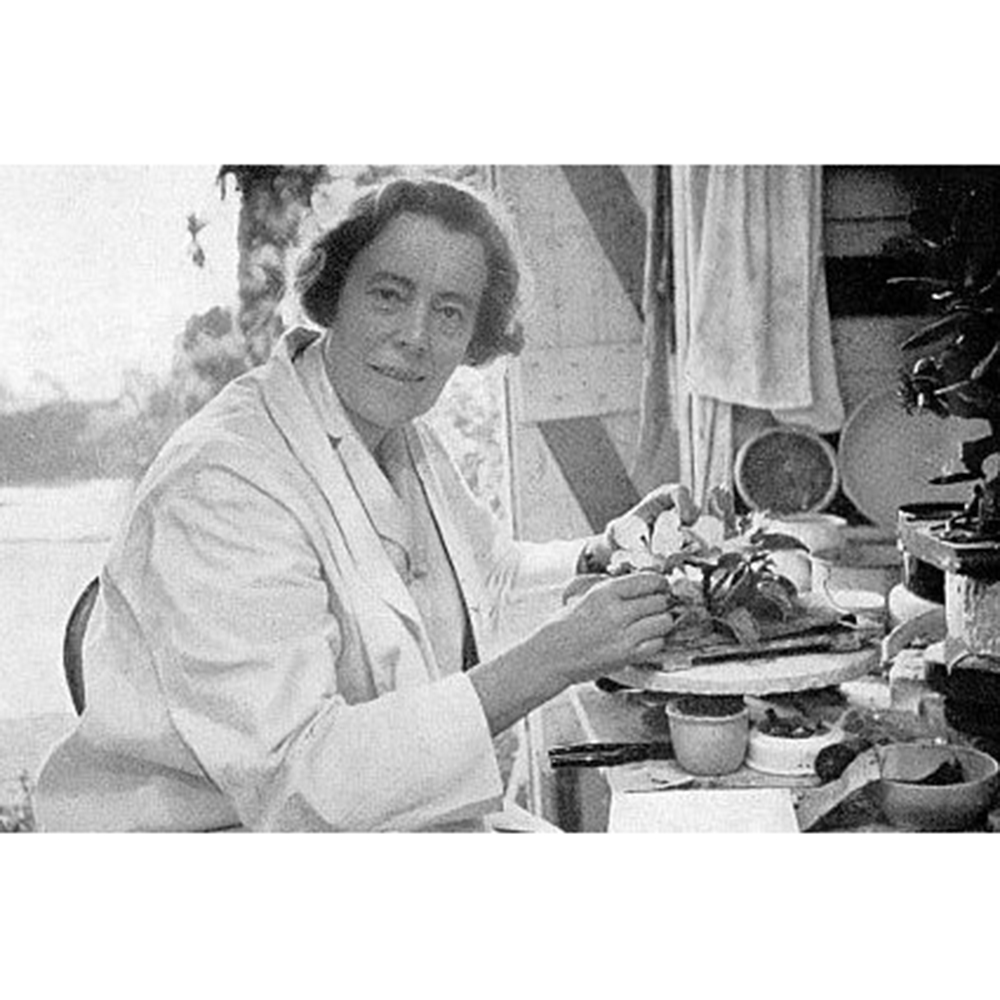
Dorothy Doughty at work in Cornwall
Boehm Porcelain Birds
Boehm Porcelain is renowned as the finest American art sculpture of flowers, birds and wild animals. Edward Marshall Boehm established his studio in Trenton, New Jersey in 1950 and his porcelain sculptures became an overnight sensation when the Metropolitan Museum of Art declared that Boehm creations were among the finest in the world. Notable examples of Boehm’s art porcelains can also be found in the White House, Buckingham Palace, the Vatican, the Smithsonian Institution, the Victoria & Albert Museum in London and The Hermitage in Moscow.
Orphaned at an early age, Edward Marshall Boehm developed a keen interest in the observation and sketching of animals and birds. On leaving school he began working in farm management and exhibited prize cattle at agricultural shows. In his spare time, he modeled figures of cattle and horses in clay. Wishing to give his sculptures permanence and color, Boehm undertook the study of ceramics, particularly the art of porcelain.
In Boehm’s words, “Porcelain is a permanent creation. If properly processed and fired, its colors will never change; and it can be subjected to extreme temperatures without damage. It is a medium in which one can portray the everlasting beauty of form and color of wildlife and nature.” Boehm’s porcelain body was produced by using organic algae to bind the clay which enabled detailed sculpting, as with the feathers on birds. The algae burned away during the firing process leaving a thin, translucent and luminous finish.
Boehm focused his attention on sculptures of birds and flowers, creating an aviary and garden on the Delaware River to study live specimens. He trained a staff of artists to cast, decorate and fire his sculptures and production continued after his death in 1969, thanks to his wife Helen, who marketed Boehm porcelain. At a promotion at Tiffany’s in 1958, Helen Boehm caused havoc when she arrived with a flock of exotic birds to advertise their porcelain sculptures. The birds escaped from their cages, the story made the papers and Helen appeared on television for days afterwards.
In 1954 Helen Boehm wrote to the first lady, Mamie Eisenhower, and was invited to the White House to present a porcelain sculpture of a bull. Since that date, every US President, from Eisenhower to Obama, has been given a Boehm porcelain sculpture. State gifts have been presented to international leaders and foreign dignitaries, including Queen Elizabeth II and Mao Tse-Tung, who received two life-size mute swans from President Richard Nixon. Boehm porcelain sculptures have become tokens of goodwill which transcend traditional boundaries between politics and culture, making them an invaluable American icon.
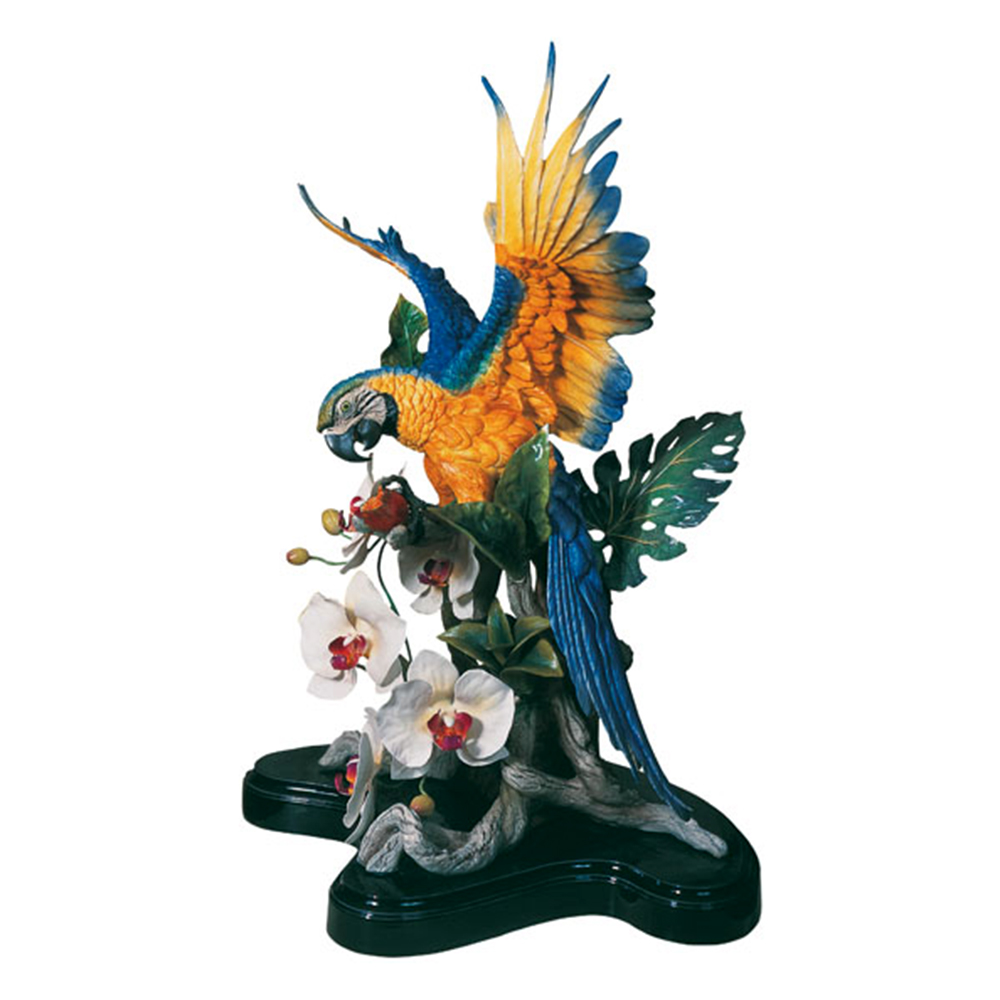
Boehm Macaw in Paradise
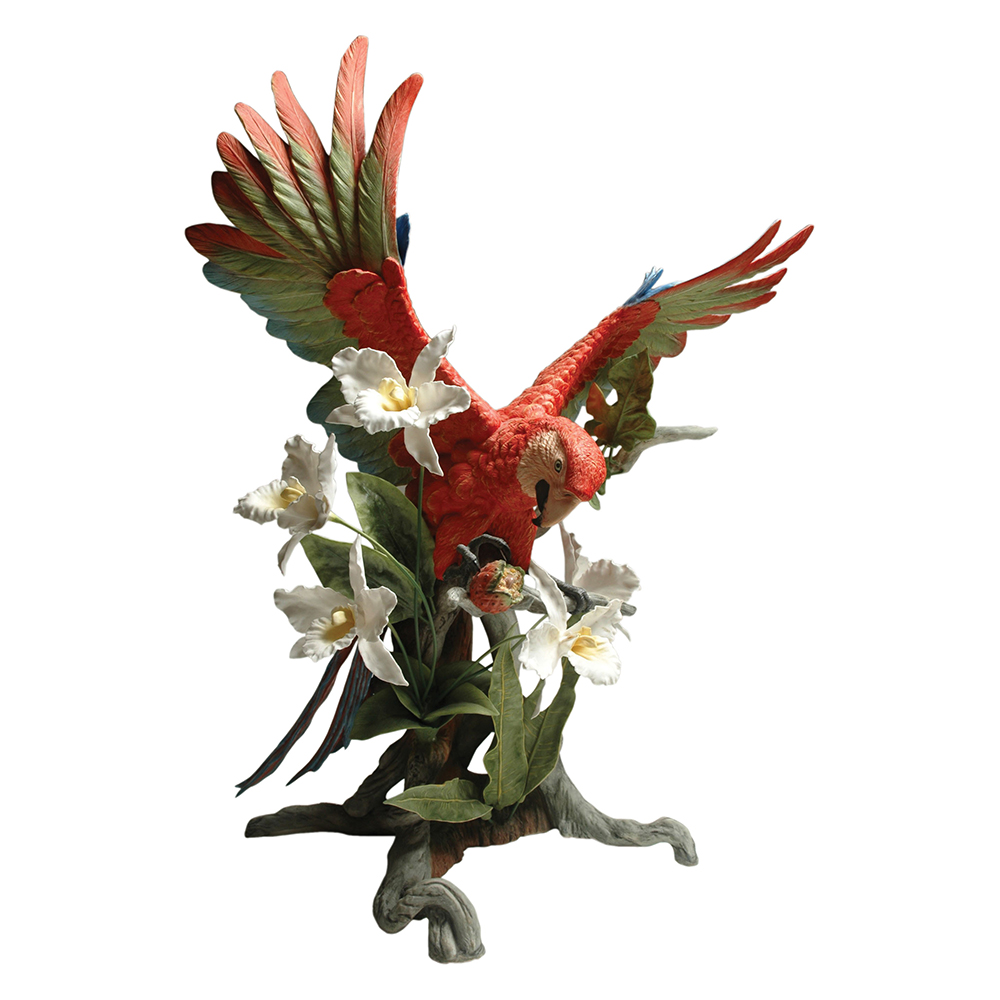
Boehm Orange Macaw
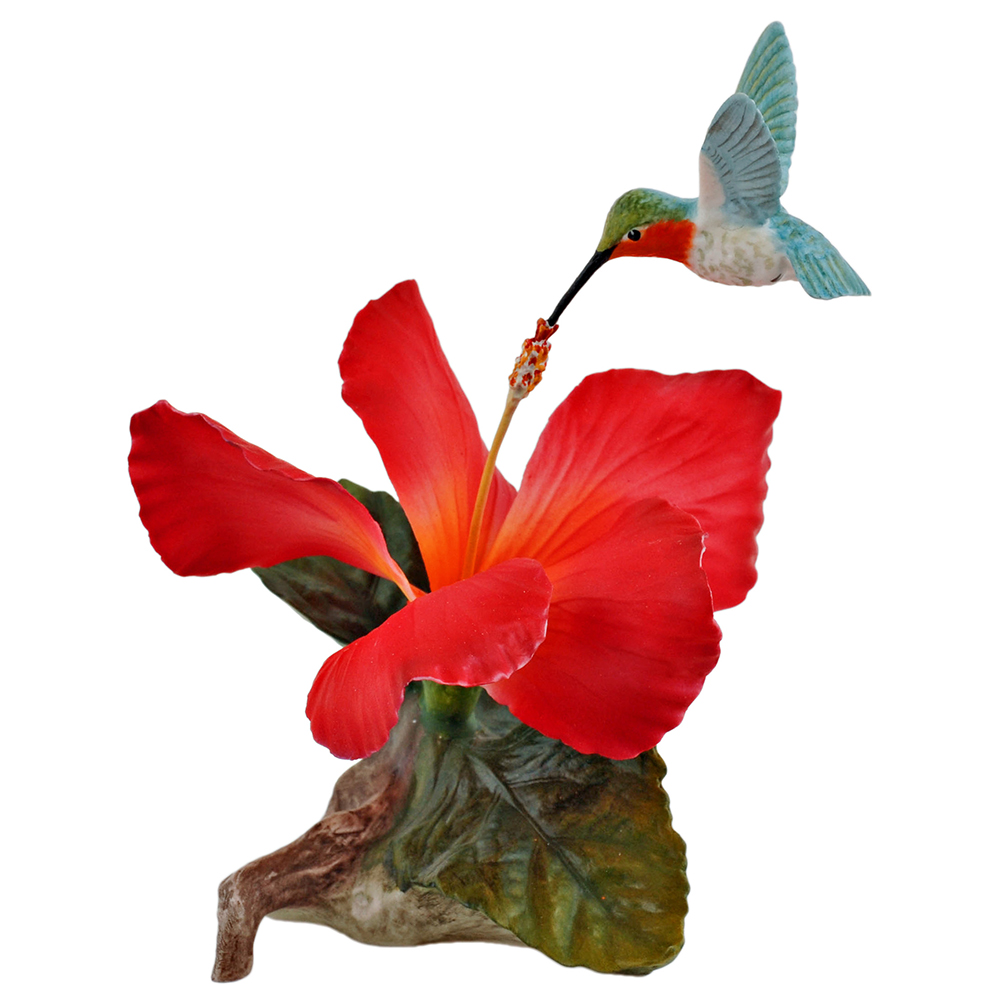
Boehm Florida Hibiscus & Hummingbird
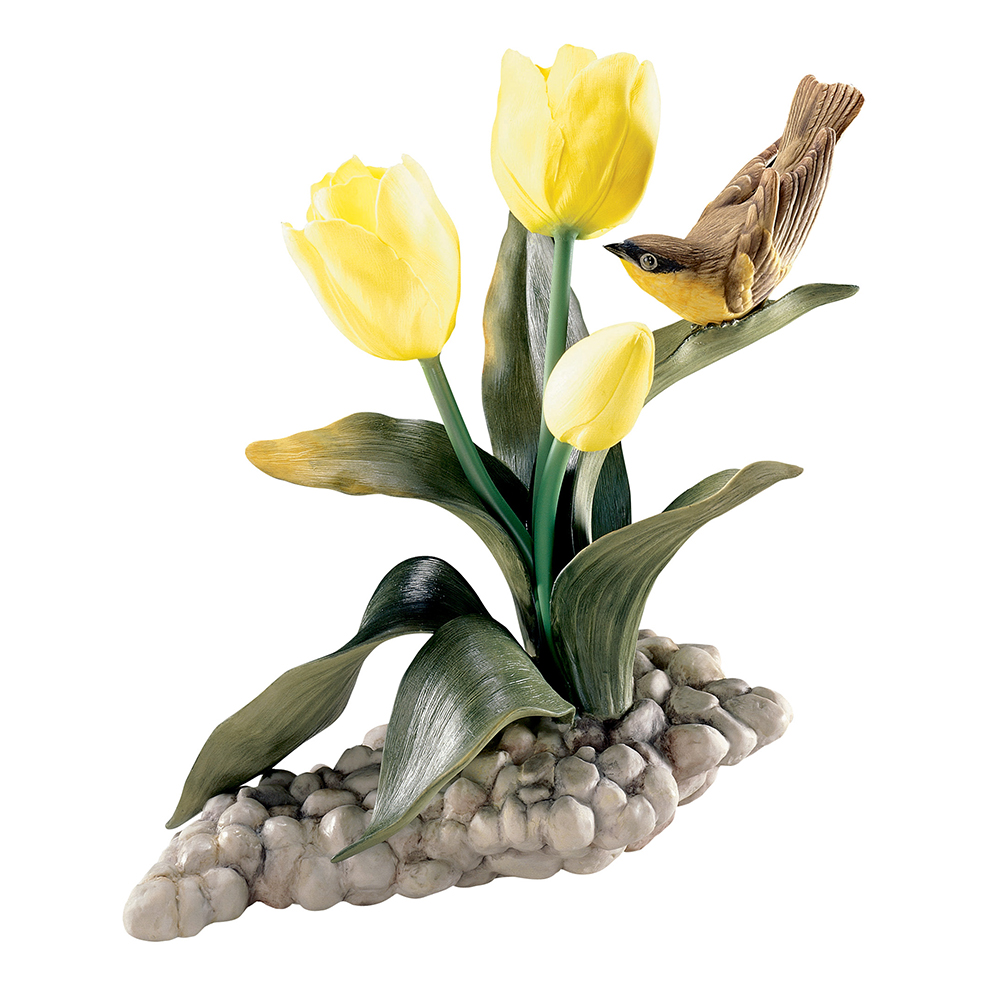
Boehm Yellow Throated Warbler with Tulips
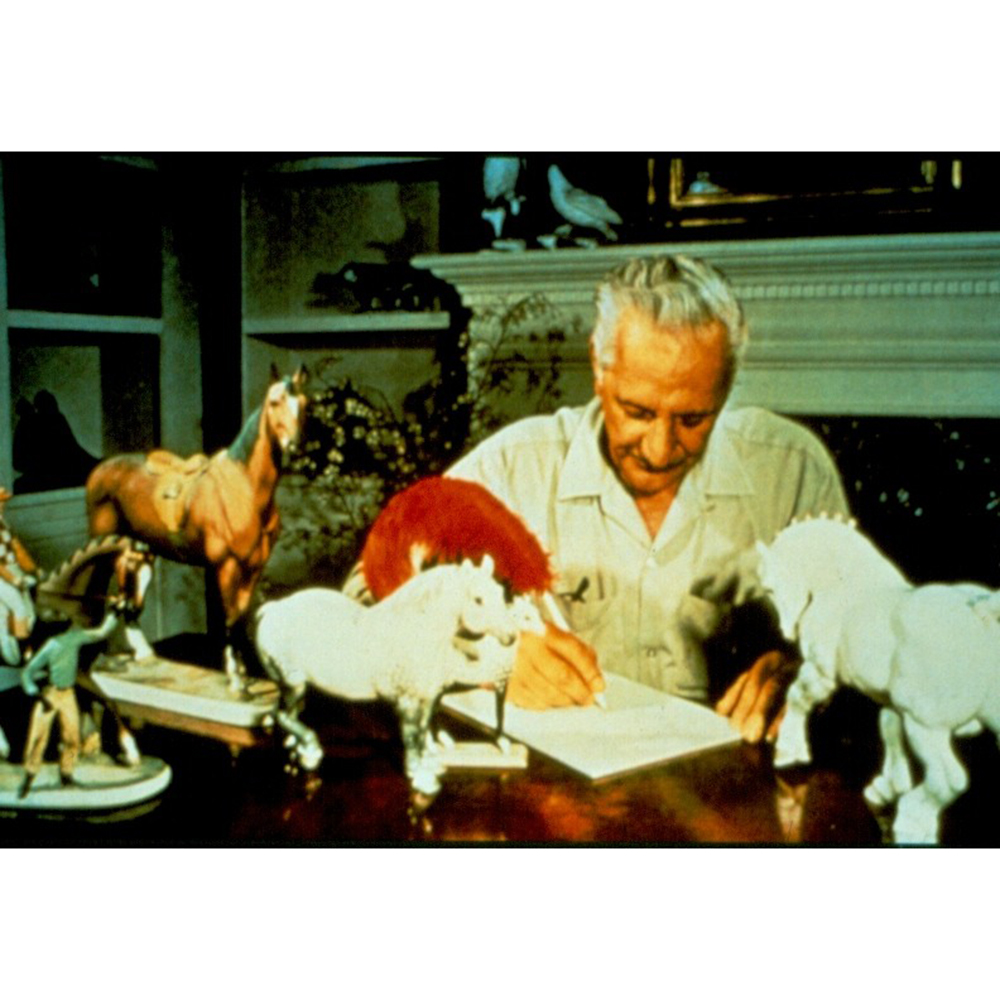
Edward Boehm
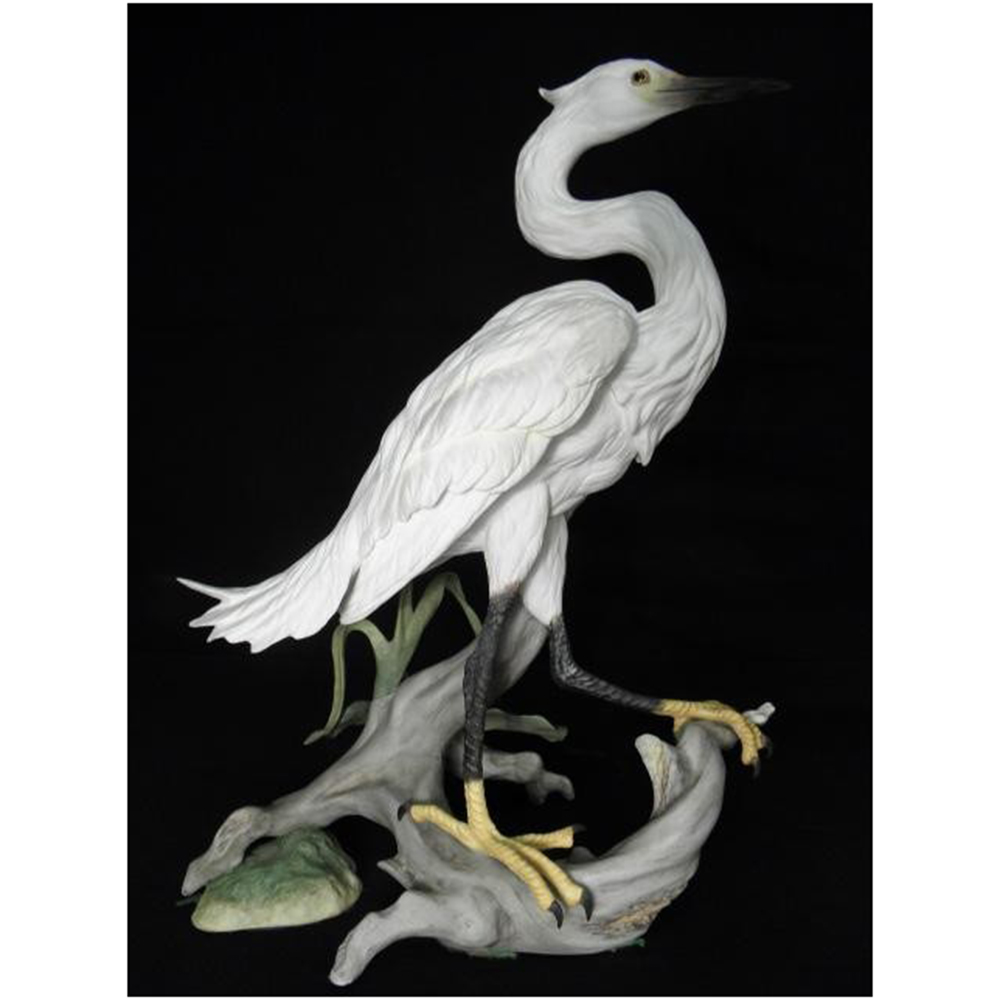
Boehm Snowy Egret
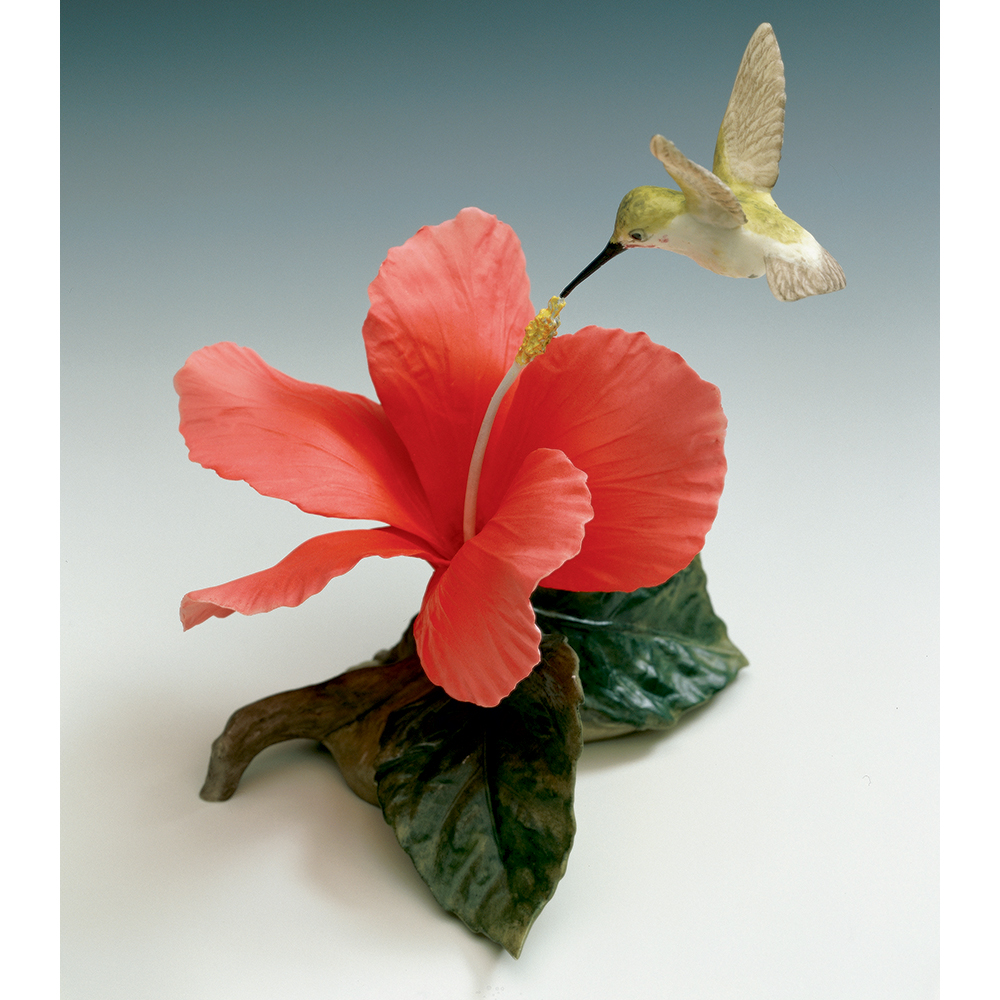
Boehm Calliope Hummingbird with Hibiscus
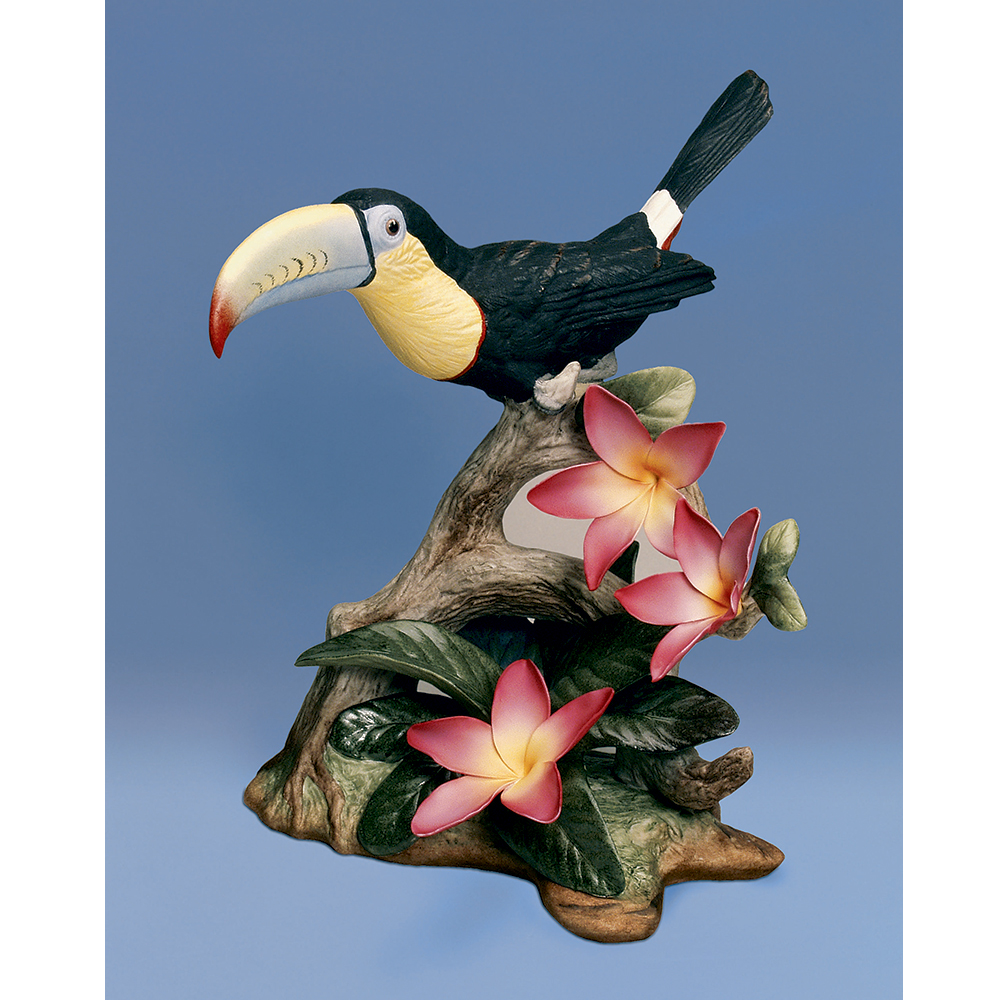
Boehm Keel Billed Toucan with Plumeria
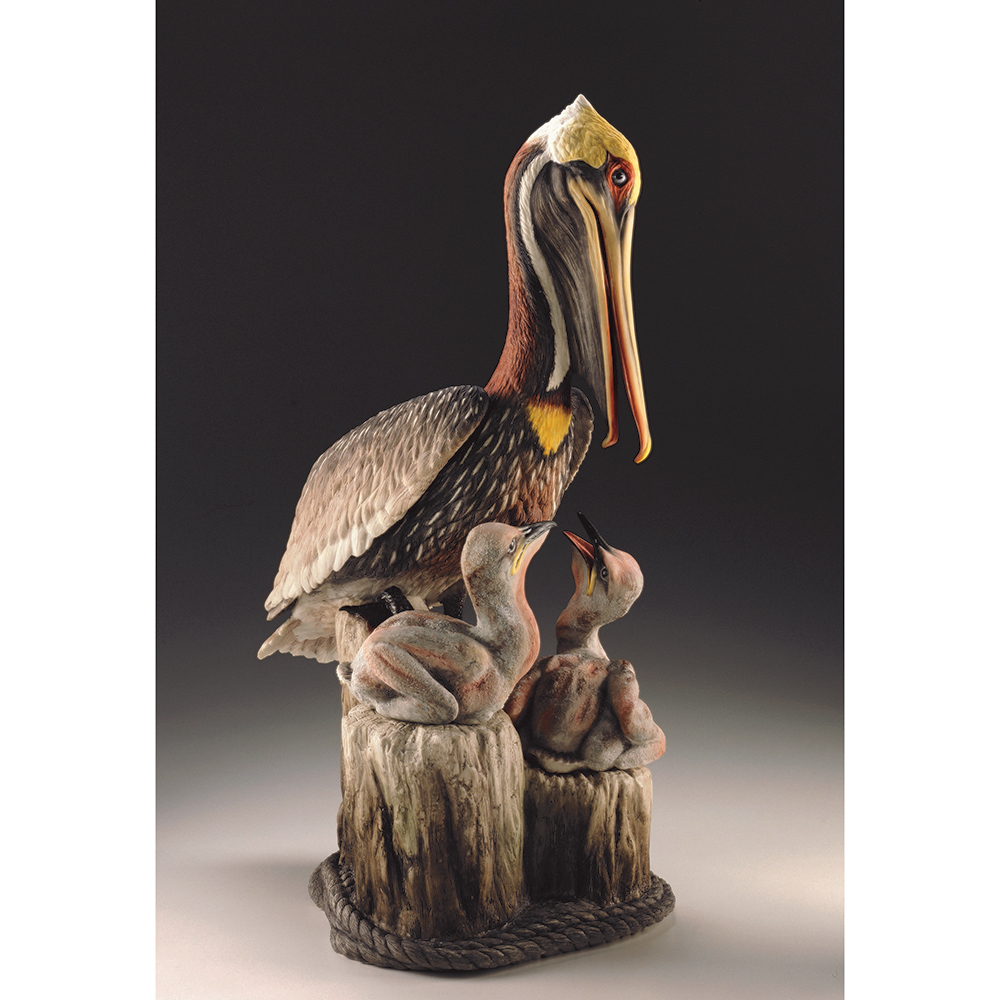
Boehm Brown Pelican Family
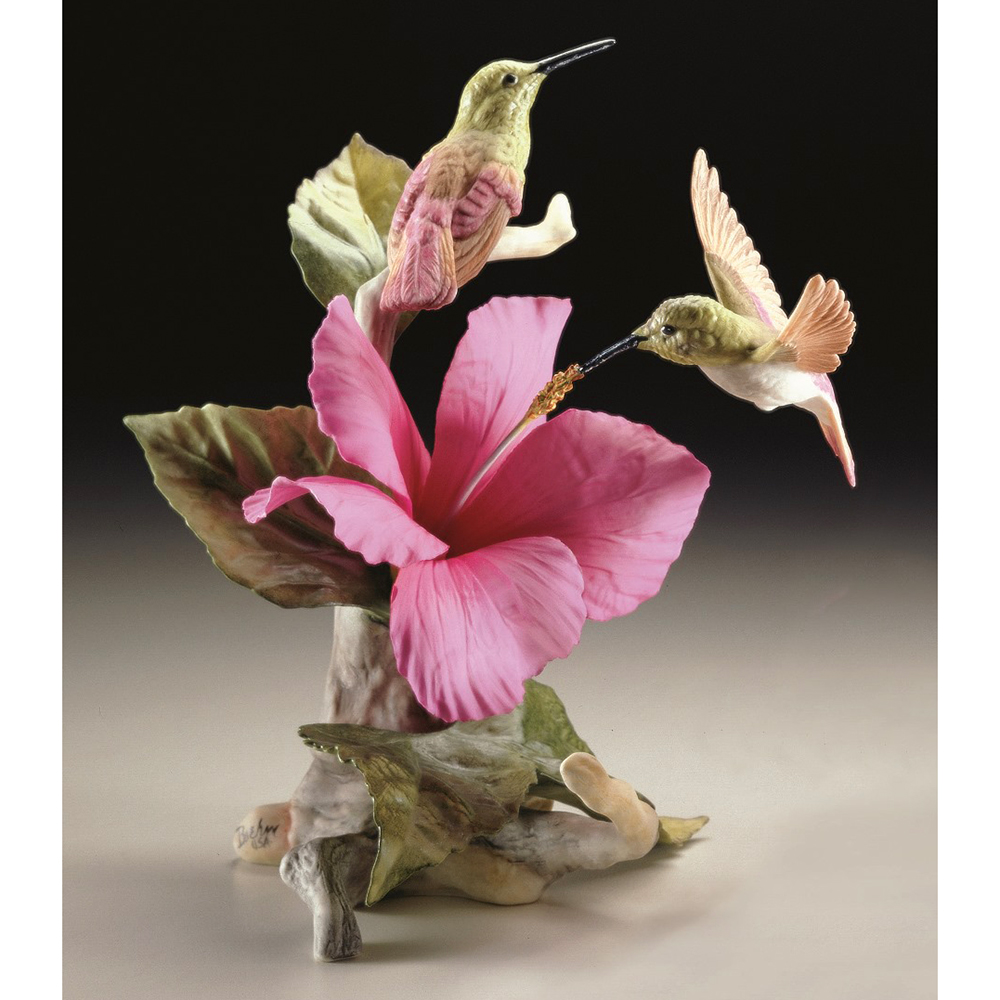
Boehm Berylline Hummingbirds with Hibiscus
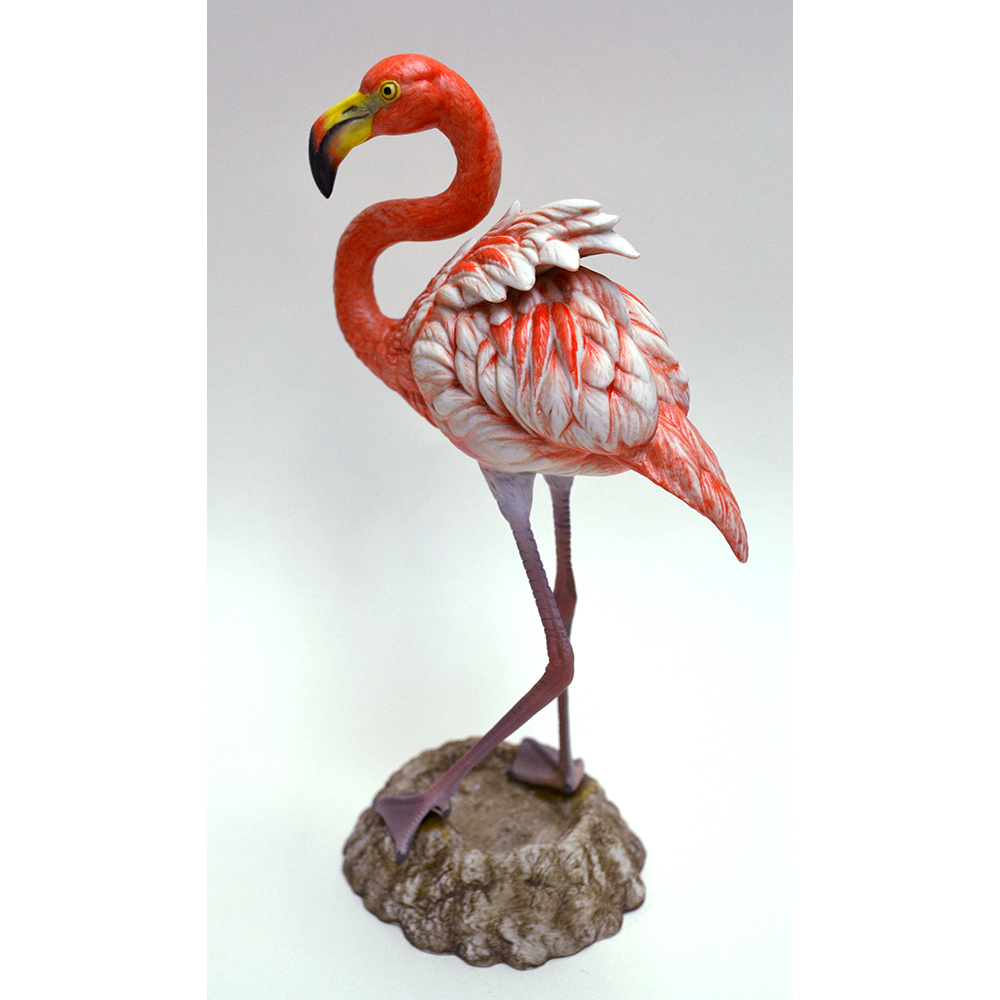
Boehm Flamingo
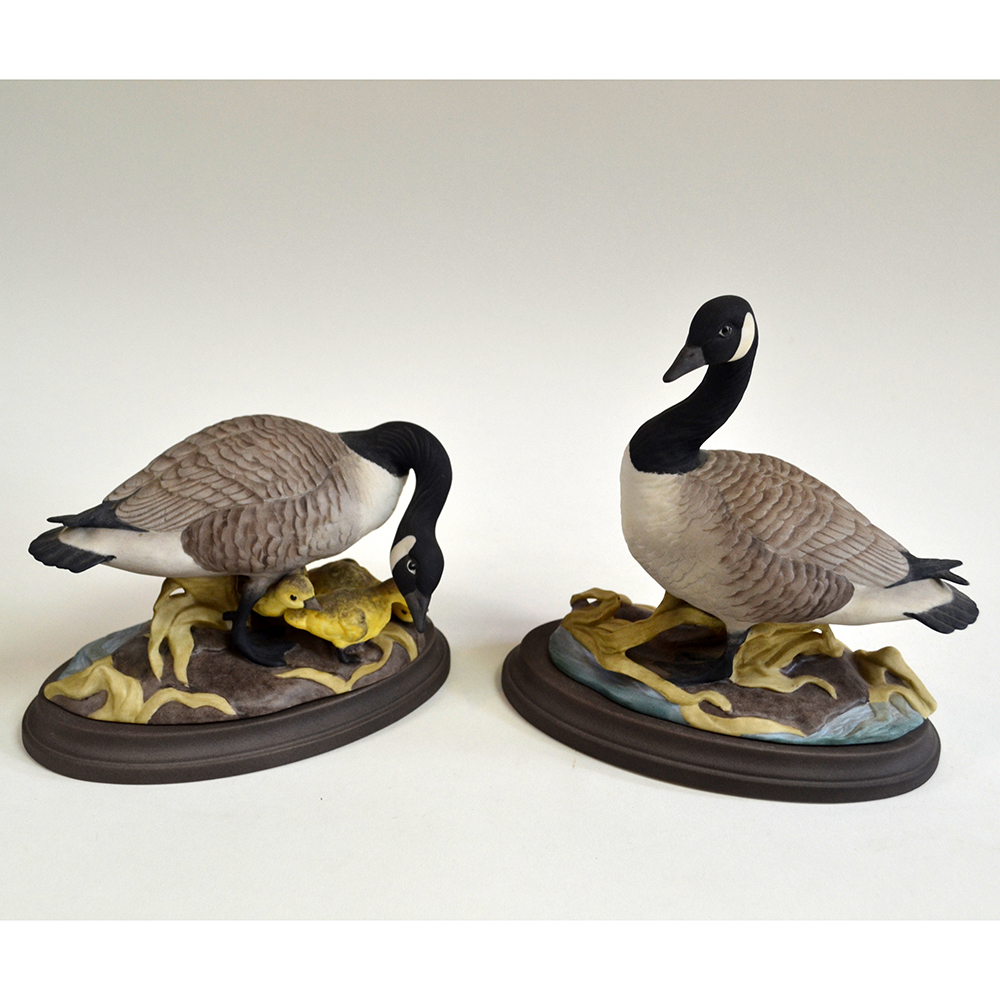
Boehm Canadian Geese
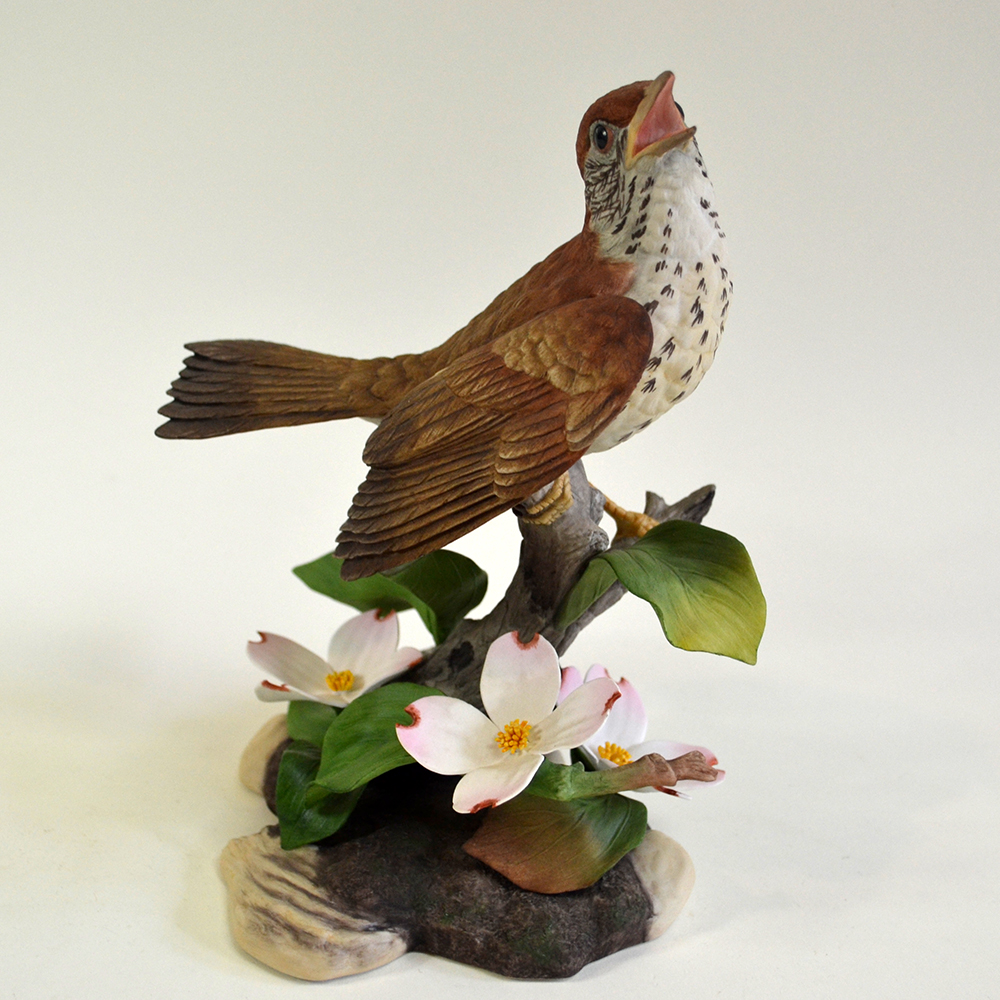
Boehm Wood Thrush
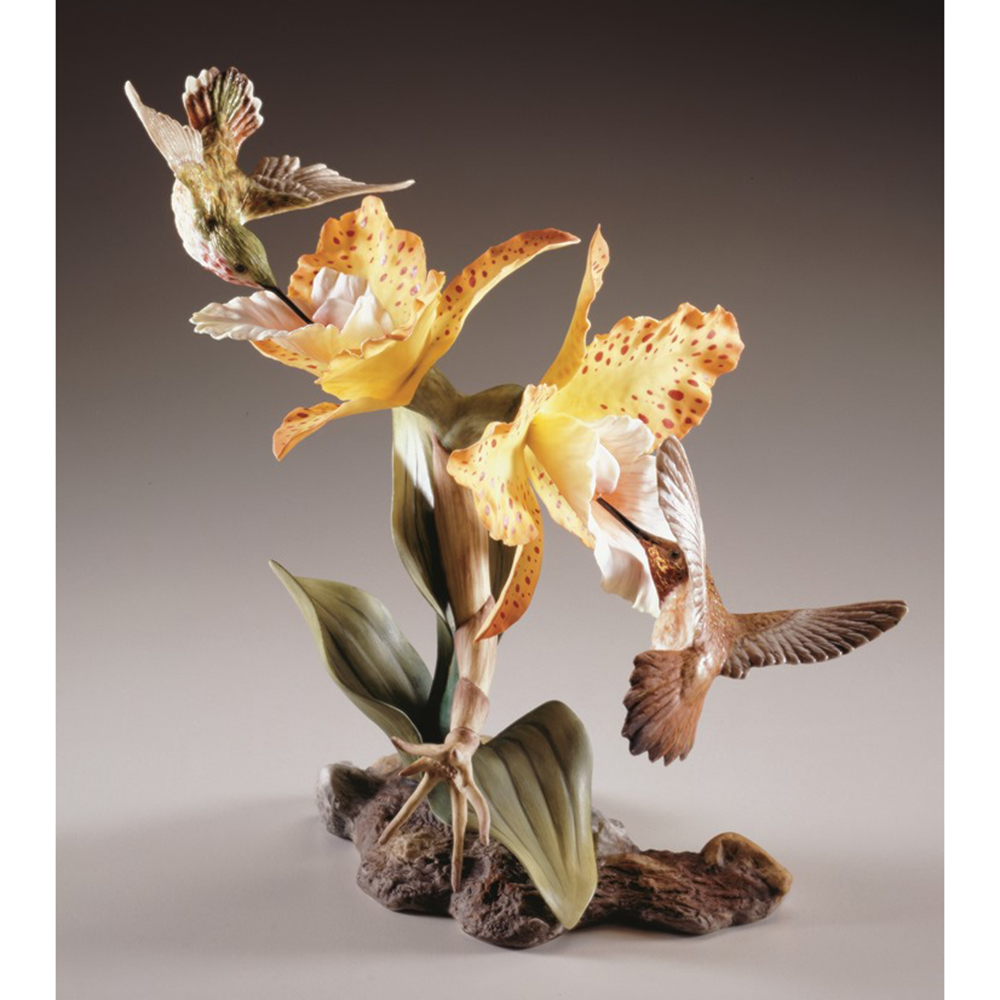
Boehm Rufous Hummingbirds with Cattleya Orchids
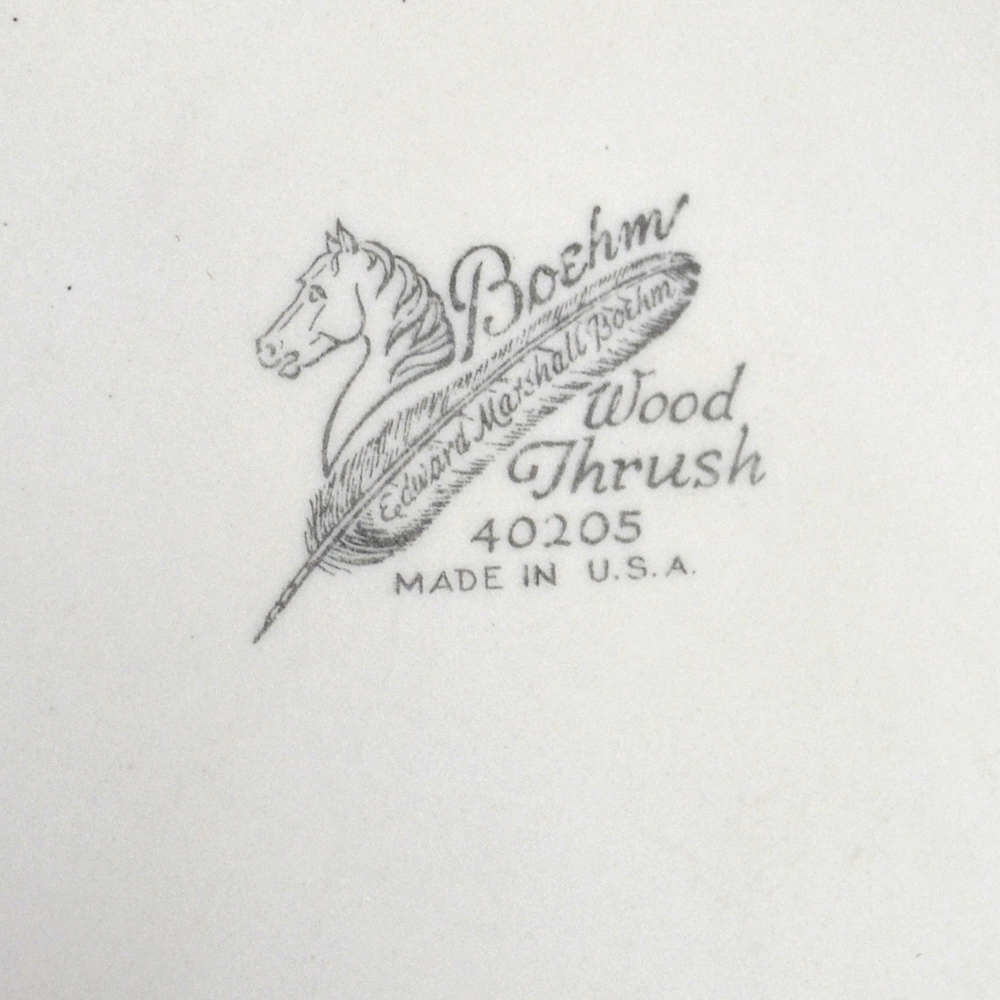
Boehm backstamp
Connoisseur of Malvern
In 1970, after Edward Boehm’s death, Helen decided to open a satellite UK studio in Malvern, Worcestershire. The new company was run by former Royal Worcester artists, Diana and Terry Lewis. Diane had worked on the Dorothy Doughty bird collection, making the delicate china flowers and Terry was responsible for assembling the intricate sculptures. They worked with a British bone china body as distinct from the porcelain used by Boehm. During the 1970s, Boehm of Malvern issued at least 50 bird studies and a similar number of flowers, under Diana’s direction, many in limited editions.
The Boehm studio in Malvern continued until the early 1990s, but Diane and Terry left in 1978 to set up their own Connoisseur studio, together with many of the skilled artists in the area. Diane’s special talent for creating botanically accurate floral studies ensured that the Connoisseur Studio’s collections were avidly collected in the art porcelain world. After the closing of the Connoisseur studio in the late 1990s, Diane continued to create special commissions for her collectors.
Hear Dr. Gwendolyn Reasoner talk about Birdwatching in Porcelain during the A Celebration of Art and Nature Weekend, November, 9 & 10
Read more...
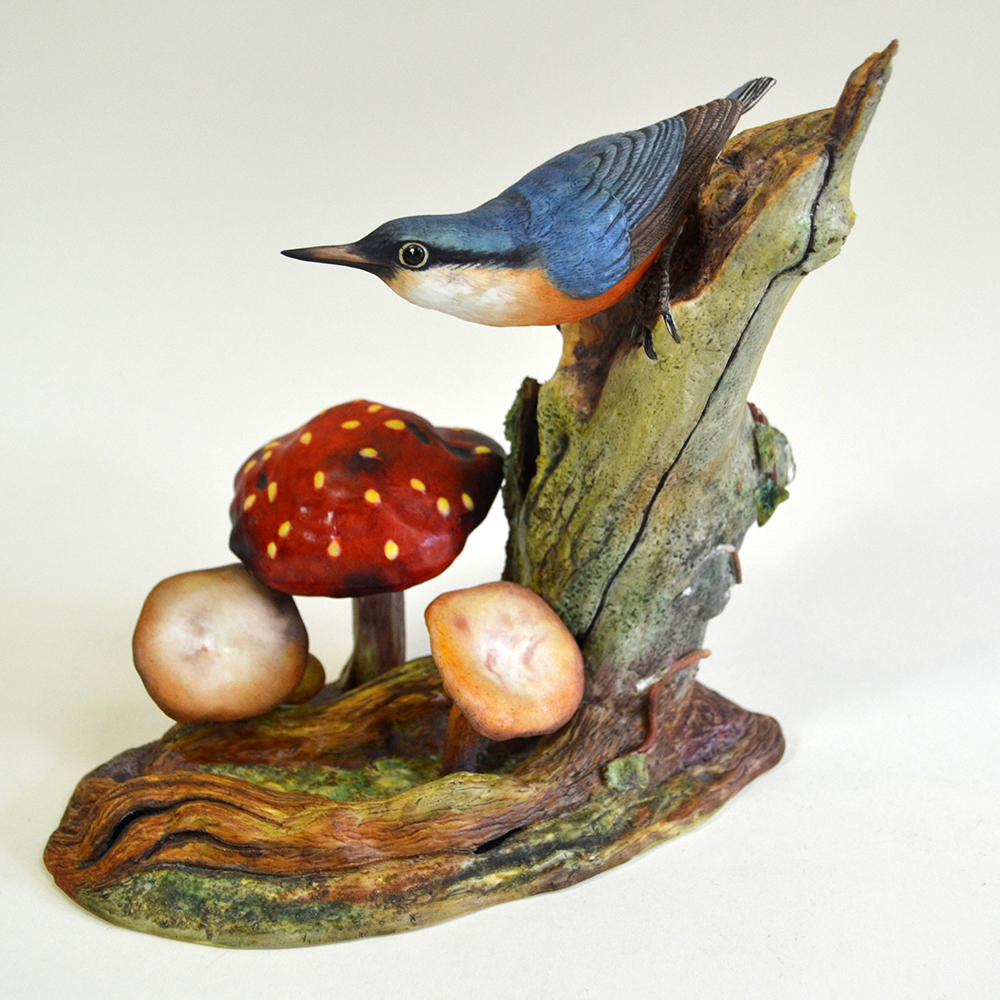
Boehm Malvern English Nuthatch
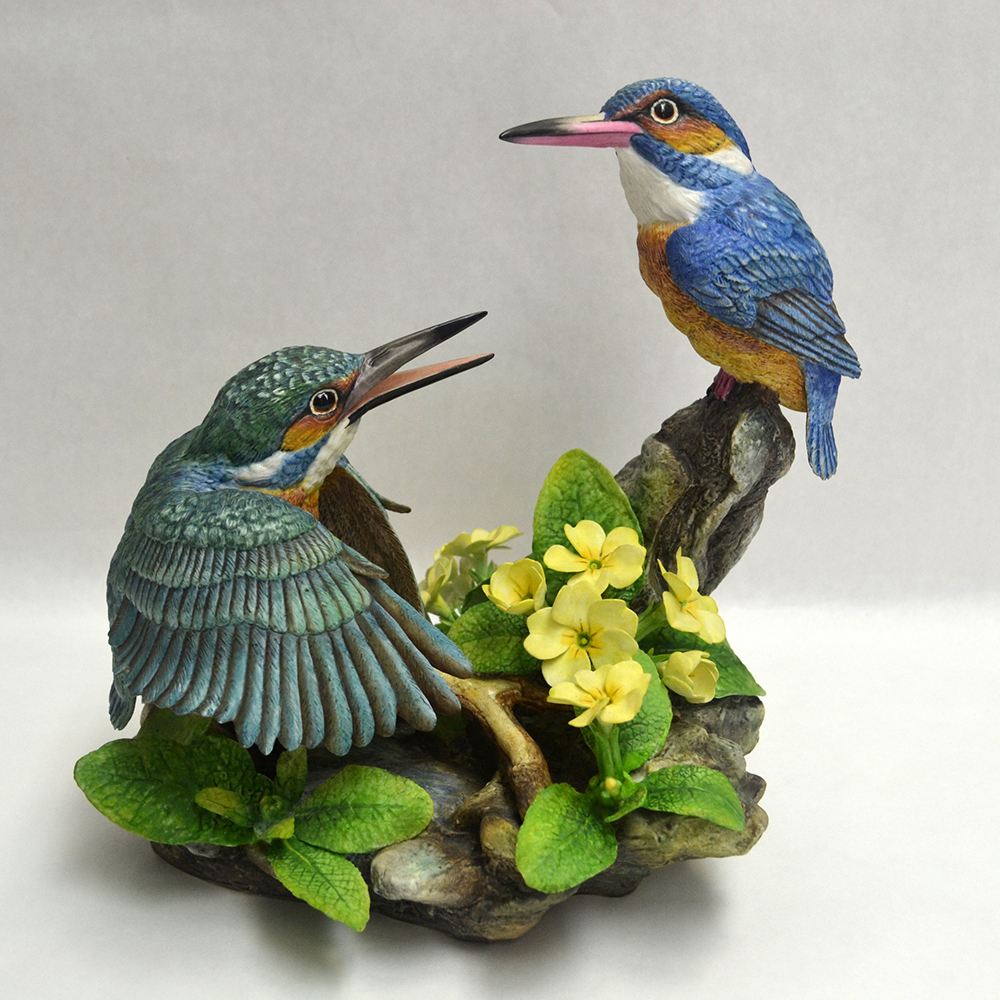
Boehm Malvern Kingfishers
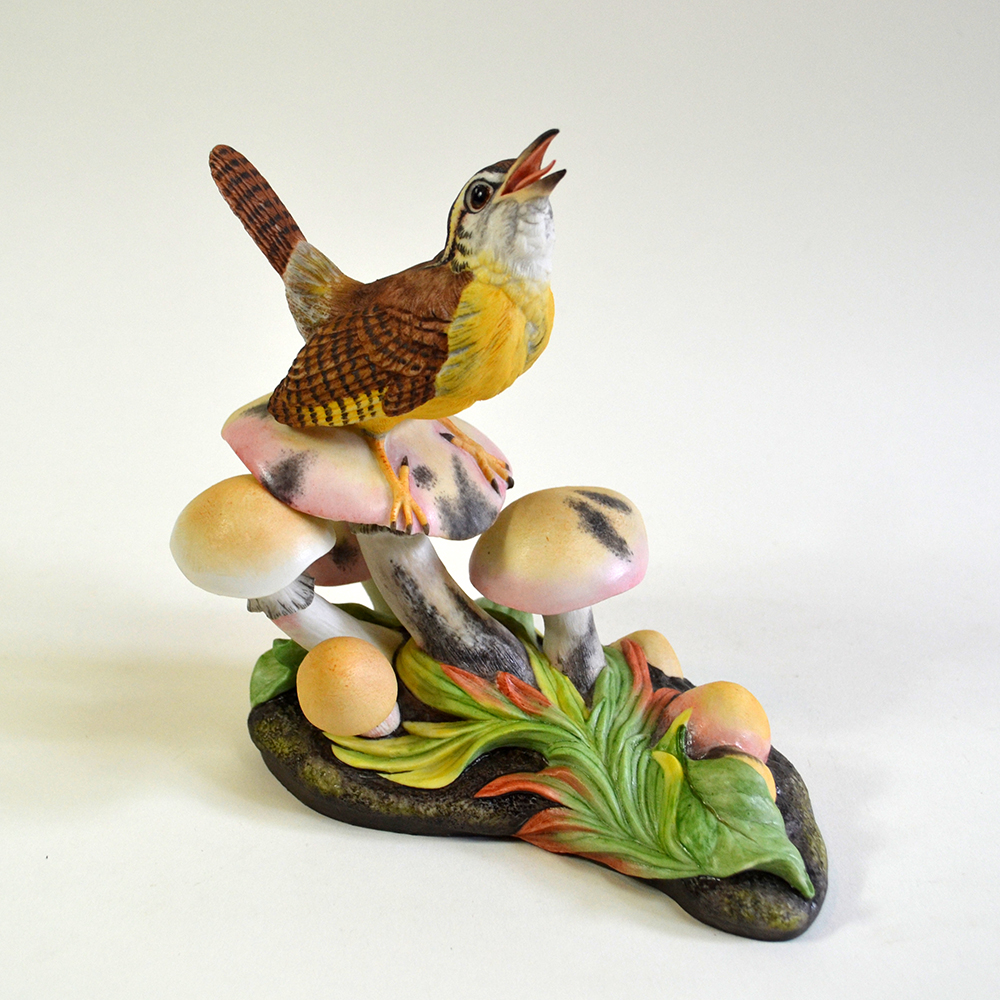
Boehm Malvern Carolina Wren
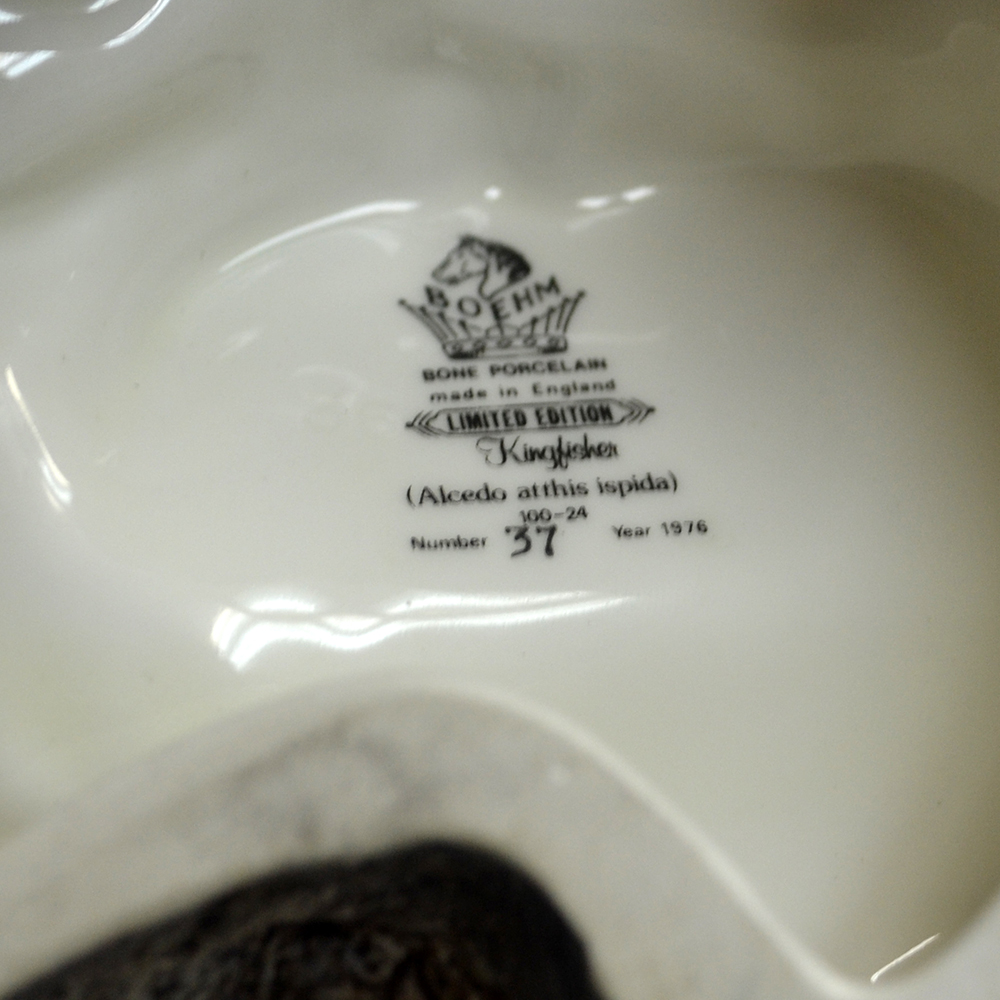
Boehm Malvern backstamp
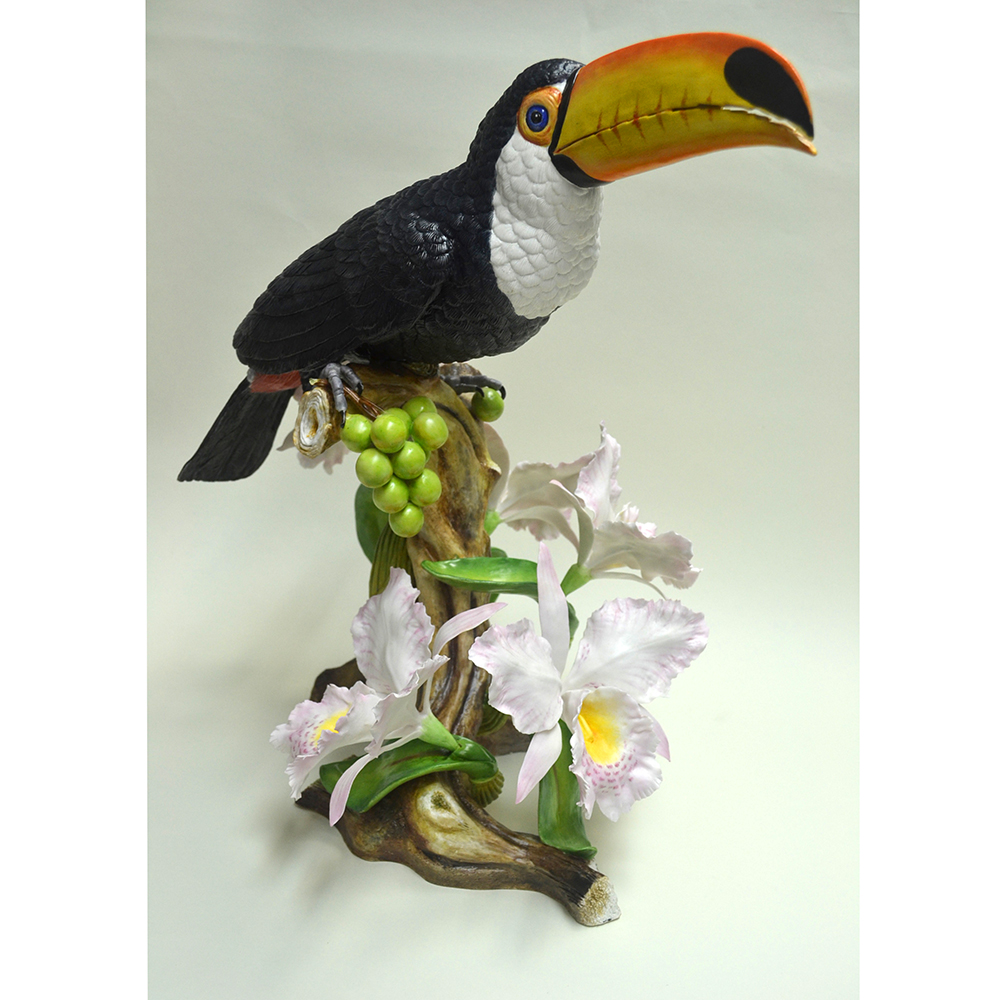
Connoisseur Toucan
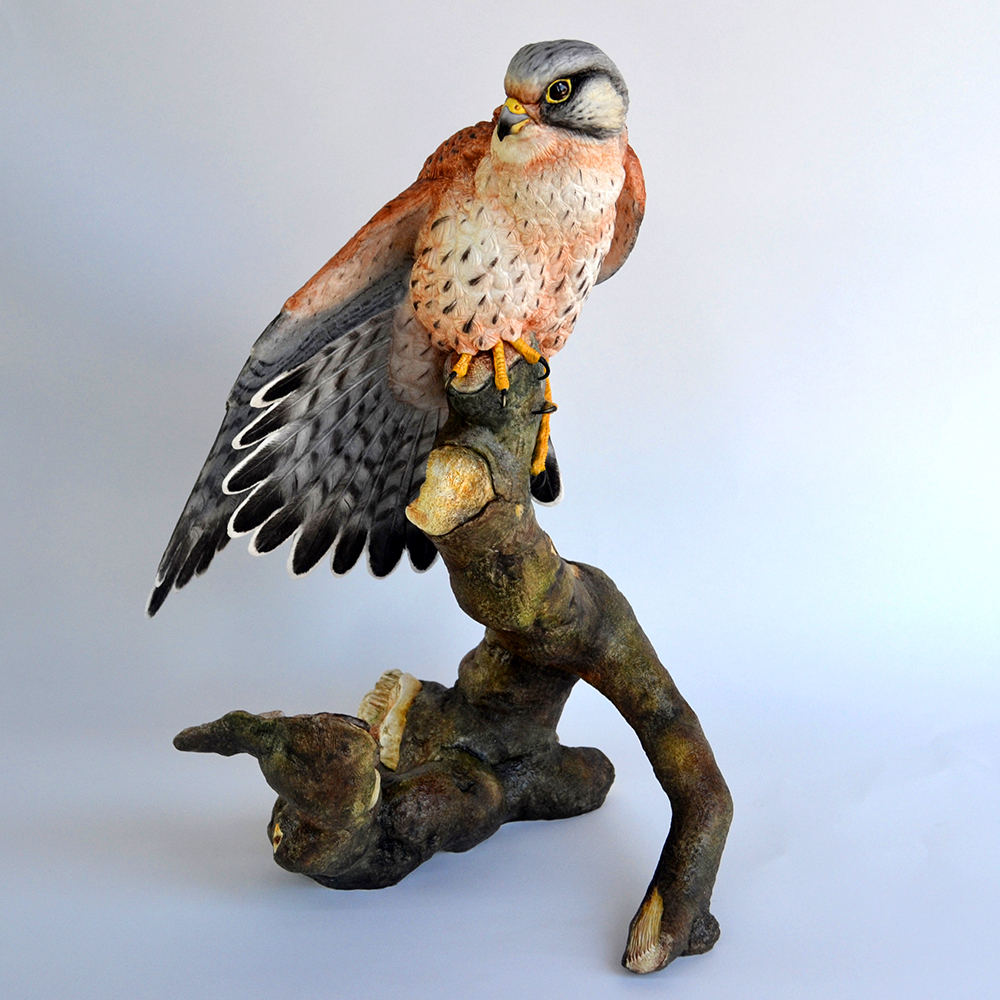
Connoisseur Kestrel
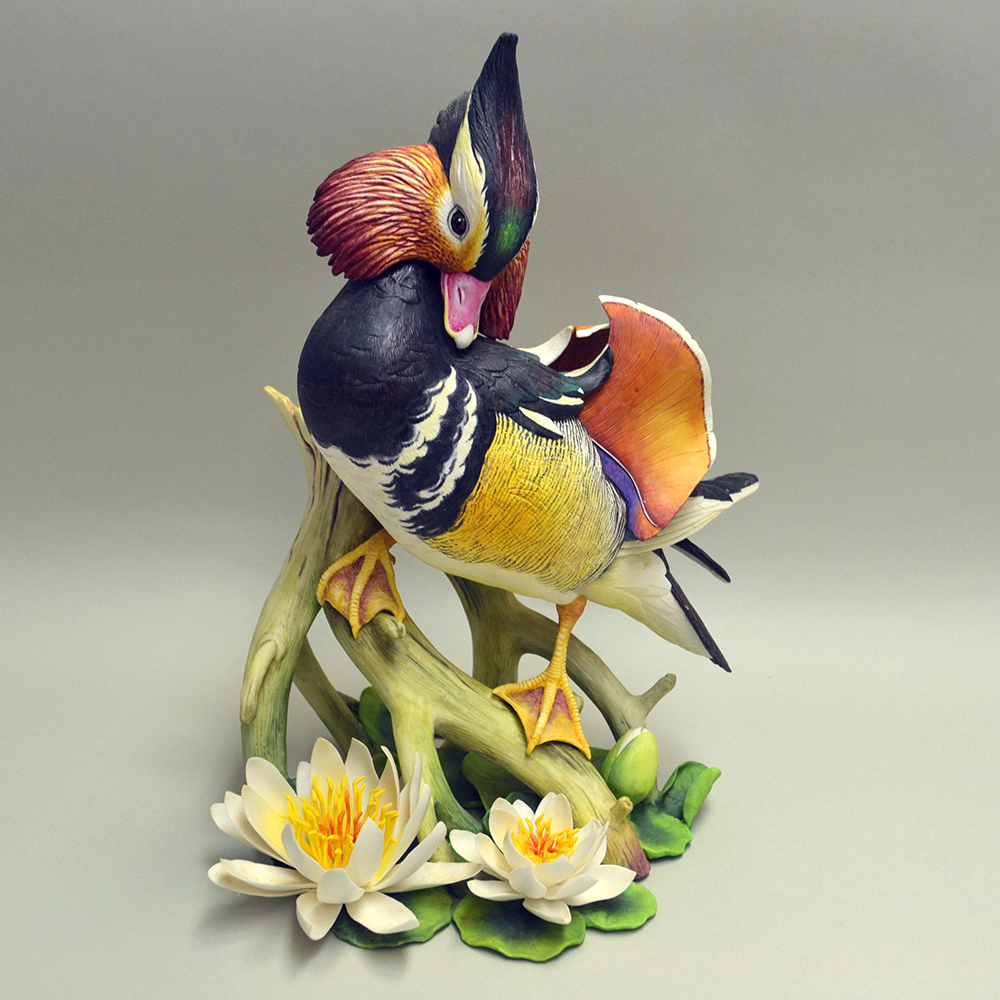
Connoisseur Mandarin Duck
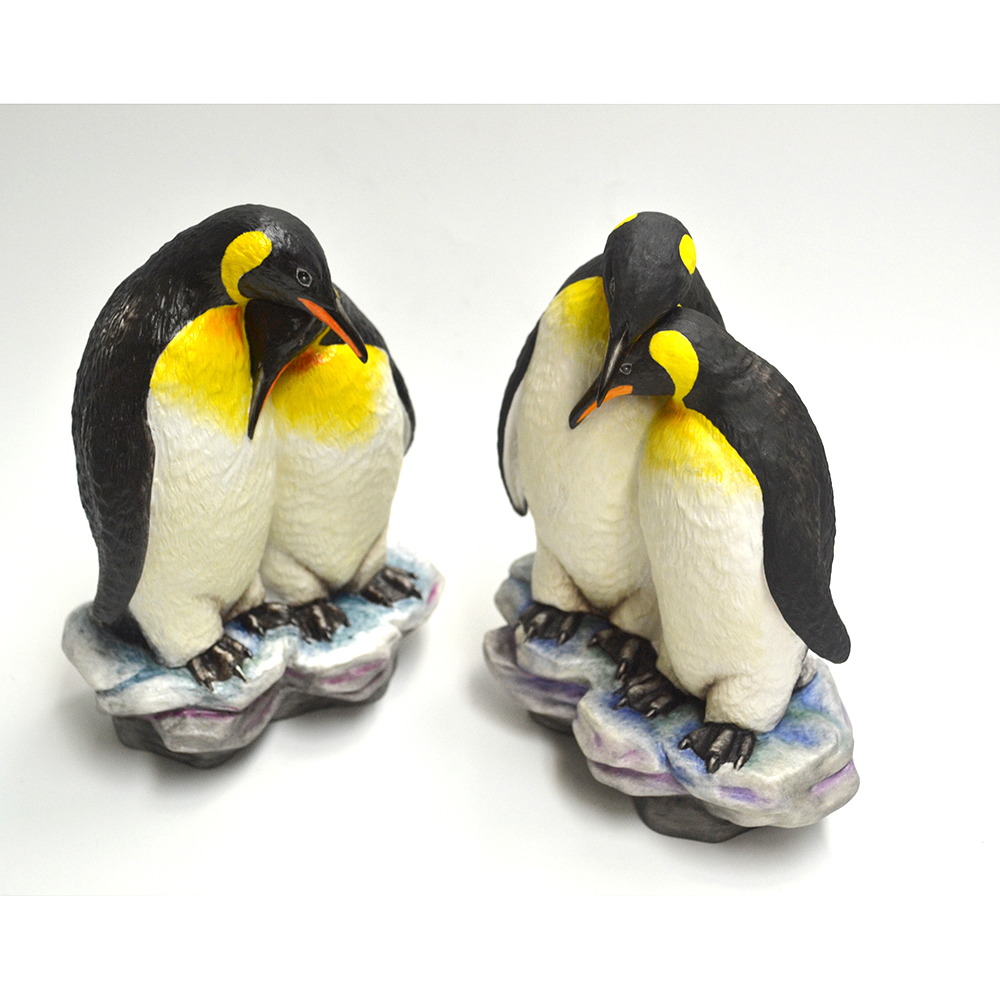
Connoisseur Affection

